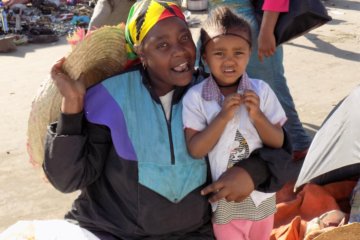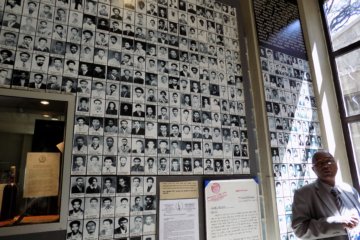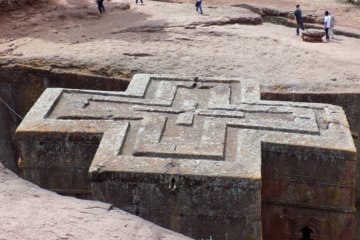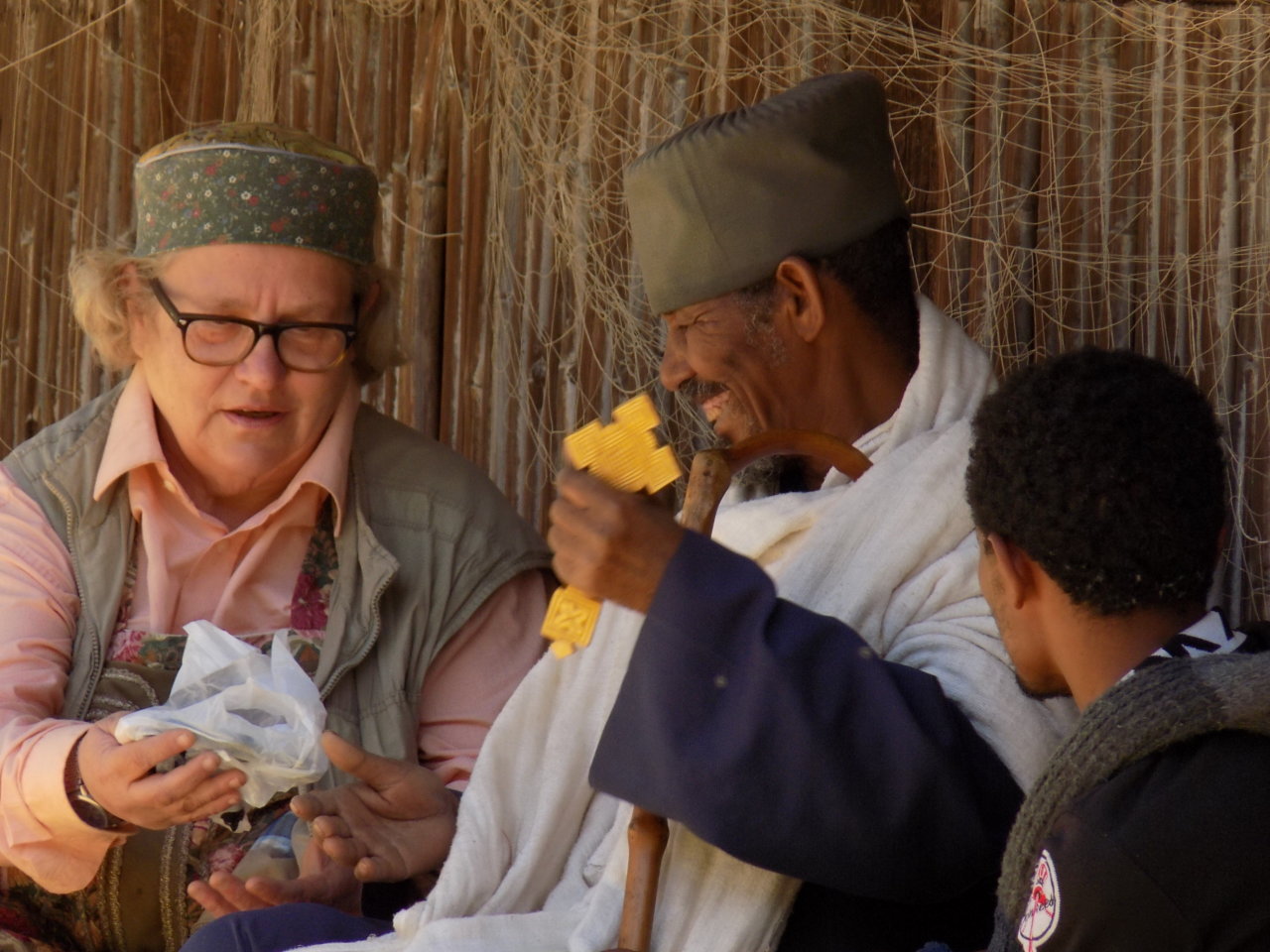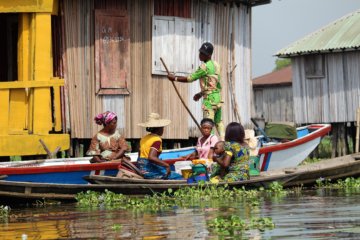 |
| Our two-deck pirogue |
 |
| Stunning riverside scenery |
Wherever we go in the world, we try to do at least one river trip. It’s one of our favourite things to do. It’s so relaxing and gives insights into the life of a country which you just don’t get from the road. The Gambia is no exception to this. As well as doing some creek fishing closer to the mouth of the river, a couple of days ago. we took a four and a half hour trip on a twin-decked pirogue from Kuntaur to Janjanbureh (formerly Georgetown).
Kuntaur is the last inland port accessible to ocean-going cargo boats, though few are seen there nowadays. A row of shabby waterfront warehouses testifies to the town’s heydey as the main export centre for the local peanut industry, but now almost the only boats leaving the docks are the very few tourist boats.
The journey took us through the River Gambia National Park which includes five uninhabited islands. The landscape is stunningly beautiful, with the river banks swathed in stretches of tropical rainforest, reeds, savannah and mangrove swamps. The wildlife here is truly exceptional and we were fortunate to spot hippos (though they were quick to submerge themselves when they heard our boat approaching!), crocodiles, baboons, and a huge variety of birds including parrots, kingfishers, African fish eagles, vultures, egrets, and finfoot.
 |
| A family of hippos |
 |
| Egret in flight |
 |
| Park rangers coming on board our boat |
The park is best-known though for the chimpanzees which have been released onto three of the islands, including so-called Baboon Island. Tourists are not allowed to set foot on any of these islands, but we were lucky to be joined on board our boat by a park ranger who explained all about the programme. It was the brainchild of Englishwoman, Stella Brewer Marsden, whose work led to the formation of the Chimp Rehabilitation Trust (CRT). Chimpanzees had been indigenous to The Gambia, but had disappeared from the country. The CRT released 19 chimps in the mid to late 1970s and now there are 112 split between four communities on three islands. Due to competition for food on the islands (especially from the baboons), the chimps are fed every day at 4pm. The rangers throw food onto the islands from boats. They throw the food at the same places, so the chimps know where to come and when. The chimpanzees aren’t tagged, but, by observing them at feeding time, the rangers can identify each animal individually and monitor their progress. The programme is now regarded as the longest-running and arguably most successful of its type. Today in The Gambia, it is illegal to keep any animal, other than a cat or a dog, as a pet, so the future of these wild creatures seems assured.


 |
| Sunset over the River Gambia |
 |
| Baboons on top of a palm tree at dusk |
At the end of our afternoon’s cruise, just after the sun had gone down, we arrived at Janjang-Bureh camp for an overnight stay. Our accommodation was a round mud-brick hut with a thatched roof. The window openings were covered with mesh and we had a mosquito net over the bed. There is no electricity at the camp, so our only lighting was a single candle. Luckily, we’d had the foresight to take our head torches with us, so we were able to see to use the rather basic shower and toilet facilities. All in all, it was minimal, but comfortable. Mark slept like a log for a full eight hours. I, on the other hand, tossed and turned, listening to every sound, from not so pleasant human noises from neighbouring huts, to unidentifiable animal and bird sounds! By the time the early morning call to prayer came from a mosque on the opposite side of the river, I had given up all hope of sleep and got up to explore what we hadn’t been able to see in the dark the night before. Maybe not the most restful night I’ve ever had, but quite an experience and I’m so glad we did it!
 |
| Our accommodation |
 |
| Lots of monkeys joined us for breakfast! |


